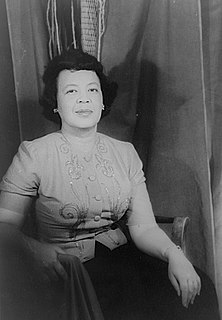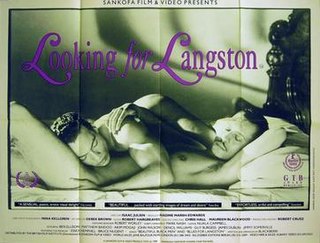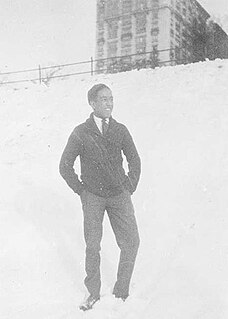Related Research Articles

Pierrot is a stock character of pantomime and commedia dell'arte whose origins are in the late seventeenth-century Italian troupe of players performing in Paris and known as the Comédie-Italienne; the name is a diminutive of Pierre (Peter), via the suffix -ot. His character in contemporary popular culture—in poetry, fiction, and the visual arts, as well as works for the stage, screen, and concert hall—is that of the sad clown, often pining for love of Columbine, who usually breaks his heart and leaves him for Harlequin. Performing unmasked, with a whitened face, he wears a loose white blouse with large buttons and wide white pantaloons. Sometimes he appears with a frilled collaret and a hat, usually with a close-fitting crown and wide round brim, more rarely with a conical shape like a dunce's cap. But most frequently, since his reincarnation under Jean-Gaspard Deburau, he wears neither collar nor hat, only a black skullcap. The defining characteristic of Pierrot is his naïveté: he is seen as a fool, often the butt of pranks, yet nonetheless trusting.

Nicolás Cristóbal Guillén Batista was a Cuban poet, journalist, political activist, and writer. He is best remembered as the national poet of Cuba.
"Let America Be America Again" is a poem written in 1935 by American poet Langston Hughes. It was originally published in the July 1936 issue of Esquire Magazine. The poem was republished in the 1937 issue of Kansas Magazine and was revised and included in a small collection of Langston Hughes poems entitled A New Song, published by the International Workers Order in 1938.
Howard Swanson was an American composer. Swanson studied at the Cleveland Institute of Music and was then taught by Nadia Boulanger in Paris. He received fellowships, awards and prizes. His preference was for linear construction and lyrical works with subtle tonal centers. He was born in Atlanta, Georgia and died in New York City.
Jazz poetry has been defined as poetry that "demonstrates jazz-like rhythm or the feel of improvisation" and also as poetry that takes jazz music, musicians, or the jazz milieu as its subject. Some critics consider it a distinct genre though others consider the term to be merely descriptive. Jazz poetry has long been something of an "outsider" art form that exists somewhere outside the mainstream, having been conceived in the 1920s by African Americans, maintained in the 1950s by counterculture poets like those of the Beat generation, and adapted in modern times into hip-hop music and live poetry events known as poetry slams.

Margaret Allison Bonds was an American composer, pianist, arranger, and teacher. One of the first Black composers and performers to gain recognition in the United States, she is best remembered today for her popular arrangements of African-American spirituals and frequent collaborations with Langston Hughes.

Looking for Langston is a 1989 British black-and-white film, directed by Isaac Julien and produced by Sankofa Film & Video Productions. It combines authentic archival newsreel footage of Harlem in the 1920s with scripted scenes to produce a non-linear impressionistic storyline celebrating black gay identity and desire during the artistic and cultural period known as the Harlem Renaissance in New York. The film has a runtime of about 42 minutes.
Pierrot is a stock character in pantomime.

James Mercer Langston Hughes was an American poet, social activist, novelist, playwright, and columnist from Joplin, Missouri. One of the earliest innovators of the literary art form called jazz poetry, Hughes is best known as a leader of the Harlem Renaissance. He famously wrote about the period that "the Negro was in vogue", which was later paraphrased as "when Harlem was in vogue."
Montage of a Dream Deferred is a book-length poem suite published by Langston Hughes in 1951. Its jazz poetry style focuses on scenes over the course of a 24-hour period in Harlem and its mostly African-American inhabitants. The original edition was 75 pages long and comprised 91 individually titled poems, which were intended to be read as a single long poem. Hughes' prefatory note for the book explained his intentions in writing the collection:
In terms of current Afro-American popular music and the sources from which it progressed—jazz, ragtime, swing, blues, boogie-woogie, and be-bop—this poem on contemporary Harlem, like be-bop, is marked by conflicting changes, sudden nuances, sharp and impudent interjections, broken rhythms, and passages sometimes in the manner of a jam session, sometimes the popular song, punctuated by the riffs, runs, breaks, and disc-tortions of the music of a community in transition.
"The Weary Blues" is a poem by American poet Langston Hughes. Written in 1925, "The Weary Blues" was first published in the Urban League magazine, Opportunity. It was awarded the magazine's prize for best poem of the year. The poem was included in Hughes's first book, a collection of poems, also entitled The Weary Blues..

"The Negro Speaks of Rivers" is a poem by American writer Langston Hughes. Hughes wrote the poem when he was seventeen and crossing the Mississippi River on the way to visit his father in Mexico. It was first published the following year in The Crisis, starting Hughes's literary career. "The Negro Speaks of Rivers" uses rivers as a metaphor for Hughes's life and the broader African-American experience. It has been reprinted often and is considered one of Hughes's most famous and signature works.
Fine Clothes to the Jew is a 1927 poetry collection by Langston Hughes published by Alfred A. Knopf. Because it departed from sentimental depictions of African-American culture, the collection was widely criticized, especially in the Black press, when it was published.
"Advertisement for the Waldorf-Astoria" is a two-page poem by Langston Hughes, accompanied by illustrations by Walter Steinhilber, which takes the form of a parody of a magazine advertisement. The poem was first published in The New Masses in December 1931 and later in Hughes's autobiography of that time period, The Big Sea. The poem is considered one of Hughes' most direct indictments of economic inequality of the 1930s.
"I, Too" is a poem written by Langston Hughes that demonstrates a yearning for equality through perseverance while disproving the idea that patriotism is limited by race. It was first published in March 1925 in a special issue of the magazine Survey Graphic, titled Harlem: Mecca of the New Negro. It was later reprinted in Hughes' first volume of poetry, The Weary Blues in 1926. This poem, along with other works by Hughes, helped define the Harlem Renaissance, a period in the early 1920s and '30s of newfound cultural identity for blacks in America who had discovered the power of literature, art, music, and poetry as a means of personal and collective expression in the scope of civil rights. In the poem, Hughes describes a ubiquitous racial oppression that degrades African Americans at the time. He writes from the perspective of an inferior servant to a domineering white family that shoos him away to the kitchen whenever company arrives.

Carolina Mercer Langston was an American writer, actress and mother to poet, playwright and social activist Langston Hughes.
"Mother to Son" is a 1922 poem written by Langston Hughes. The poem follows a mother speaking to her son about her life, which she says "ain't been no crystal stair". She first describes the struggles she has faced and then urges him to continue moving forward. It was referenced by Martin Luther King Jr. several times in his speeches during the civil rights movement, and has been analyzed by several critics, notably for its style and representation of the mother.
"Harlem" is a poem by Langston Hughes. These eleven lines ask, "What happens to a dream deferred?", providing reference to the African-American experience. It was published as part of a longer volume-length poem suite in 1951 called Montage of a Dream Deferred, but is often excerpted from the larger work. The play A Raisin in the Sun was titled after a line in the poem.
"Mississippi–1955" or "Mississippi" is a poem written by Langston Hughes in response to the 1955 death of Emmett Till. Hughes was the first major African American writer to pen a response to the killing, and his poem was widely republished in the weeks that followed. It was initially dedicated to Emmett Till, but did not mention him specifically. Hughes republished the poem in 1965 and 1967, revising it in a way that decreased its specific applicability to Till.
This little book with poems of Langston Hughes was published in 1944, the editor - Hendrik Driessen - and the publisher of this rather limited edition are not named. This book however was a private edition of Jan van Krimpen. It was an illigal edition in war time in Holland. The type was set on the Linotype in Bodoni by the firm N.V. Koot en Hinnen in Amsterdam and printed by J.C.A. Meischke in Amsterdam.
References
The Collected Poems of Langston Hughes. ed. Arnold Rampersad. New York: Alfred A. Knopf. 1997.